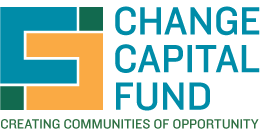Scalable Programs Demonstrate Huge Return on Investment By Putting Children and Adults on Path to Success
— Flexible Funding, Centralized Data Systems Key to Developing High Impact Programs and Demonstrating Results —
(New York, N.Y.)—Change Capital Fund (CCF), a collaborative of 17 public and private funders that invests in community development organizations to increase economic mobility in persistently low-income New York City communities, today released public benefit rationales that demonstrate that its grantees’ programs are highly effective and have a huge return on investment. The release, part of a final report on grantees work, comes as CCF concluded its most recent four-year, $4 million funding cycle.
From 2014 to 2018, CCF invested in four organizations to develop new program models and increase their ability to use data to demonstrate the benefits of their strategies. The grantees are St. Nick Alliance, Cypress Hills Local Development Corporation, Fifth Avenue Committee, and New Settlement Apartments.
Impacts for selected programs include:
o St. Nicks Alliance’s Literary Immersion Model Pilot Project increased the percentage of third graders in their after school program who were reading at grade level from 7% to 31% in a nine-month period. Third graders who read at grade level are four times more likely to graduate from high school than those who do not.
o CHLDC Student Success Center participants have higher high school graduation, college enrollment, and college persistence rates than a comparable group of similar students. Eighty-seven percent graduate high school, compared with 59-72% of comparable students; 85% enroll in college, compared with 38-49% of comparable students; and 83% complete their first year of college, compared with a CUNY rate of 68%.
o Similarly, New Settlement Apartment’s College Access Program participants exceeded CUNY persistence and graduation rates. Ninety percent completed their first year of college compared with 66-68% of CUNY students; 81% percent completed two years compared with 55%; and 59% completed college compared with 47-50% of CUNY students. Because we know that education decreases poverty and increases income, New Settlement projects that each dollar invested generates $66 in benefits seen in increased lifetime earnings.
o Fifth Avenue Committee’s Employment Training Bridge pilots provided remedial math and English tutoring to help participants meet requirements for job training programs. In one pilot, 83.3 percent of participants were able to achieve the required level for the training programs; and in the other, 82% attained that goal. With an investment of just $144 per participant, participants without a high school diploma or equivalent are projected to earn additional lifetime earnings of $340,994 more than they would have had the bridge program not been available to enable them to participate in sectoral employment training..
“All of the grantees have been able to demonstrate scalable, measurable impact that translates not only to improved outcomes for residents in their communities but also significant return on investment for government and philanthropic funders,” said Patricia Swann, New York Community Trust and CCF co-chair. “The grantees and CCF funders collaborated to build organizational capacity while setting ambitious goals for their program outcomes—increasing the number of people served and the achievements of their participants. And we did it!”
While communities throughout New York City have experienced revitalization, deep pockets of poverty persist. Community Development Corporations are anchors in these neighborhoods, retaining and producing low-income housing, building on-ramps to living-wage employment, improving schools, and supporting higher education attainment.
“With the grant money that CDCs win, they are able to use their strong community ties and deep experience to create innovative programming, but the grants do not cover crucial organizational support – meaning, money to cover associated administrative and technology costs – and that is where CCF has been able to help,” said Steven Flax, M&T Bank and CCF co-chair. “Through CCF’s substantial, long-term funding and technical assistance, these organizations now have systems in place to determine what is working, what to discontinue, and what to scale up. Their effective use of these new data systems has allowed them to make adjustments along the way, adding to improved results.”
As a result of the collaboration between CCF and its grantees, job training and placements have increased along with wages, hours worked, and benefits. Young people have increased graduation rates, college access, and college persistence. Elementary school students have drastically improved reading scores. Grantees have measured their own data against publicly available data to create public benefit arguments which compare program outcomes and costs to other programs with similar goals. As a result, all four grantees have won data-centric funding, specifically $21.98 million in new grants – 73 percent from federal, state, and city government.
“These public benefit arguments proved an enormous return on investment and showed that with small, targeted investments, children and adults can escape poverty. And, by design, these programs are scalable and easily replicated with corresponding investment. These are the kinds of proof points that translate into increased funding from government and philanthropy,” concluded Swann.
Change Capital Fund is now accepting RFPs for the next cohort by invitation and welcomes new funders to join their collaborative.
###
